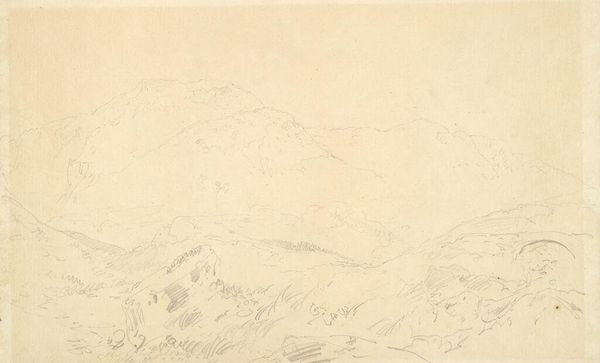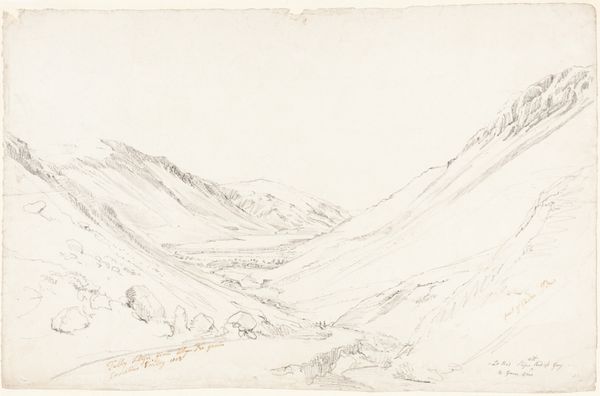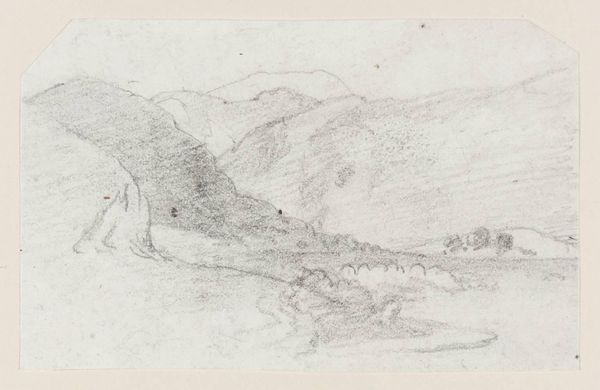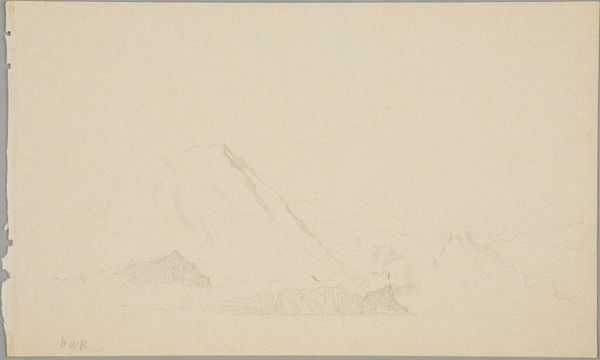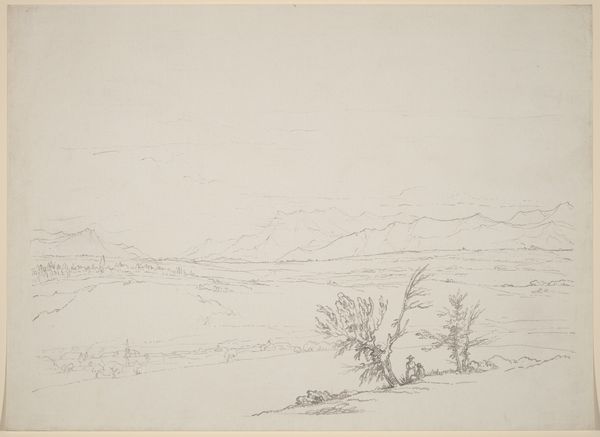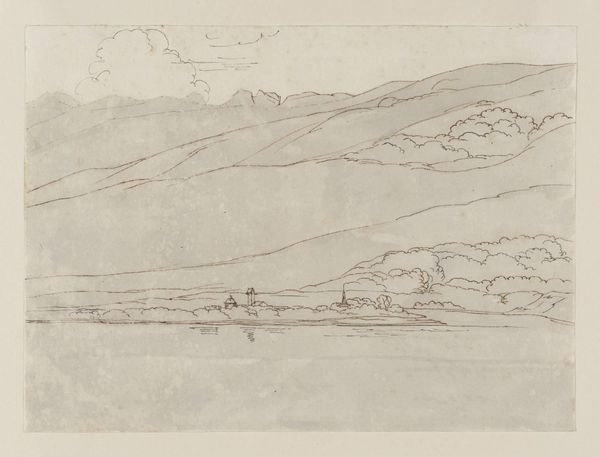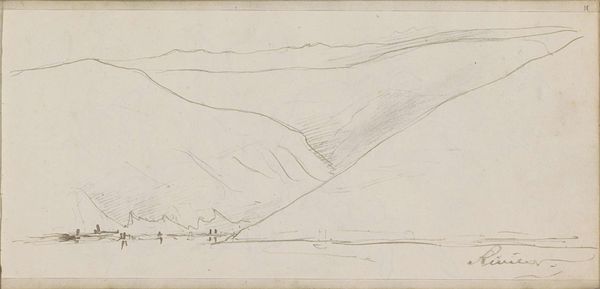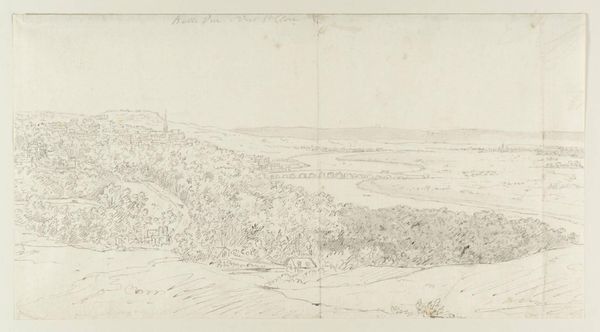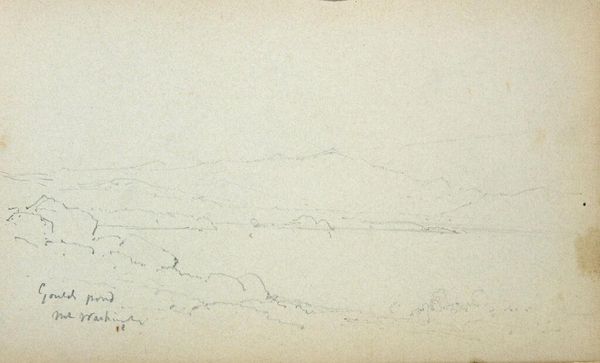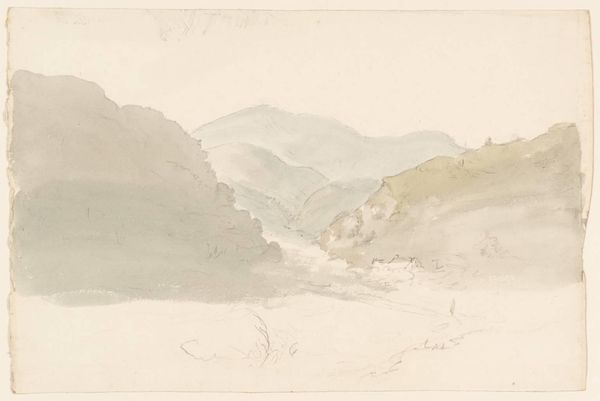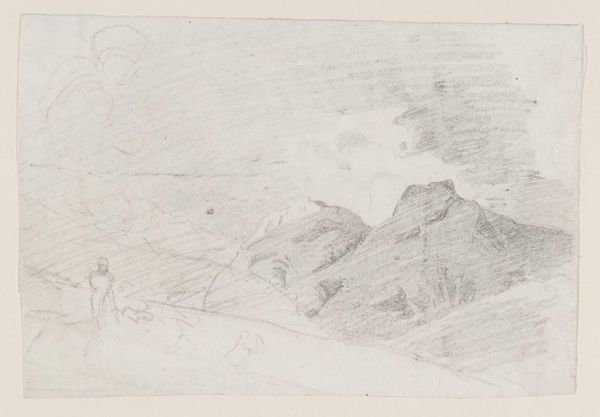
drawing, plein-air, pencil
#
drawing
#
plein-air
#
landscape
#
romanticism
#
pencil
Dimensions: 235 mm (height) x 309 mm (width) (bladmaal)
Editor: We’re looking at "View of Mont Blanc from the Col de la Faucille," a pencil drawing created by Theodore Rousseau in 1834, which is currently held at the SMK in Copenhagen. It has an incredibly subtle and ethereal quality to it. What stands out to you, looking at it now? Curator: I’m immediately drawn to its role as a product of plein-air painting. Rousseau was making a deliberate choice to move art outside the studio, engaging directly with the landscape. This reflects a growing interest in naturalism but also, a subtle power shift – art leaving the salon for the ‘real’ world. How might this new form democratize art? Editor: That’s a fascinating way to look at it. I hadn’t considered the socio-political implications of painting outdoors. What impact did this have on the reception of his work? Curator: Think about it this way: Previously, landscapes were carefully constructed studio scenes often laden with symbolic meaning for the elite. Now, the artist captures a raw, immediate experience available to a broader audience. What new audiences might emerge as consumers and creators? This raises questions about the institutional acceptance of art, the rise of independent exhibitions, and, ultimately, the economic model sustaining artists like Rousseau. How might new ways of valuing and selling art shape subject matter? Editor: That makes perfect sense. The move outside redefines both the production and consumption of art. Curator: Precisely! So, considering this as a study, done en plein air, might that alter our view of it? Editor: Definitely! Understanding the cultural shift helps me appreciate Rousseau’s work beyond just its aesthetic appeal. Curator: And that broader perspective enriches the art and helps us connect across time!
Comments
No comments
Be the first to comment and join the conversation on the ultimate creative platform.
